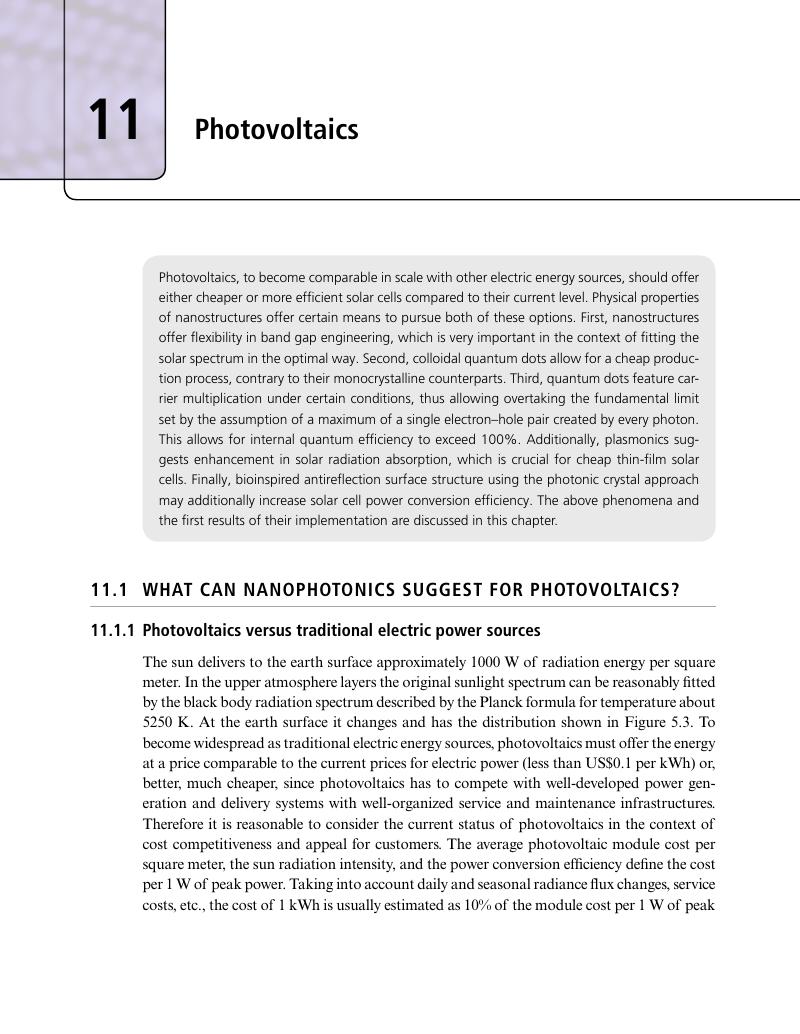11 - Photovoltaics
from Part II - Advances and challenges
Published online by Cambridge University Press: 23 November 2018
Summary

- Type
- Chapter
- Information
- Applied Nanophotonics , pp. 363 - 379Publisher: Cambridge University PressPrint publication year: 2018

